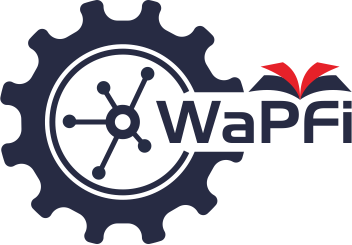Investigating research trends in augmented reality in physics education: a bibliometric and visualized analysis
Abstract
In recent years, Augmented Reality (AR) has mushroomed, especially in the education sector. However, only a few articles review research trends in the application of AR to learning Physics. For this reason, this article aims to investigate the research trend of Augmented reality (AR) in physics education and describe visualisation based on bibliometric analysis. The Scopus database is processed through Biblioshiny and VOSViewer for publications about AR in physics education. In selecting publications, a bibliometric analysis was performed on several documents based on country, institution, journal, publication, author, and co-occurrence of the author's keywords. The research method used is descriptive quantitative, with bibliometric visualisation used to analyse and visualise the characteristics of the selected publications. A total of 204 publications were selected following research criteria between 2013 and 2018. The results revealed that students, virtual reality, educational computing, e-learning, engineering education, and physics education were the most studied concepts in Augmented Reality research. Journal of Physics: Conference Series is the most relevant source. Indonesia is the most important country in this research because it has 20 articles and 20 single-country publications, while Bakri F. and Wibowo F.C. is the most influential writer. The top institutions in this study were Jakarta State University and International Information Technology University.
Downloads
References
Abouzid, Główka, & Karaźniewicz. (2021). Trend research of vitamin D receptor: Bibliometric analysis. Health Informatics Journal Volume 27, Issue 4, October-December 2021. https://doi.org/10.1177/14604582211043158.
Ahmad, Sugiarto. (2022). Penggunaan Media Augmented Reality Assemblr Edu untuk Meningkatkan Pemahaman Konsep Peredaran Darah. Jurnal Guru Inovatif 4 (2), h. 7.
Alfares, Y. J., & Murwonugroho, W. (2021). Penerapan teknologi augmented reality untuk media pembelajaran interaktif pada anak. Jurnal Penelitian dan Karya Ilmiah, 6(2), 202-212. Doi: 10.25105/pdk.v6i2.9526
Basuki, S. (2022). Pemetaan Ilmu Pengetahuan. Kumpulan Makalah Kursus Bibliometrika. Masyarakat Informetrika Indonesia. (Depok: Pusat Studi Jepang, Universitas Indonesia).
Dharmayana, I. W., & Herawati, A. A. (2021). Descriptive Evaluative Study on the Implementation of Online Learning During the COVID-19 Pandemic in the Courses of Guidance and Counseling Profession. Paper presented at the International Conference on Educational Sciences and Teacher Profession (ICETeP 2020).
Donuata, P. B. (2019). Pengaruh quantum teaching metode PQ4R berdasarkan keragaman kecerdasan terhadap hasil belajar fisika. Jurnal Riset Dan Kajian Pendidikan Fisika, 6(1), 23. https://doi.org/10.12928/jrkpf.v6i1.11094
Dutta, R., Mantri, A., & Singh, G. (2022). Evaluating system usability of mobile augmented reality application for teaching Karnaugh-Maps. Smart Learning Environments, 9(1), 1–27.
Dwiyantoro. (2020). Tren Topik Penelitian Jurnal Terakreditasi Peringkat Sinta 2 Bidang Ilmu Perpustakaan dan Informasi di Indonesia Periode 2013-2019 (Analisis Subjek Menggunakan Pendekatan Bibliometrik Co-Word). Media Pustakawan.
Hakim, L. (2020). Analisis Bibliometrik Penelitian Inkubator Bisnis Pada Publikasi Ilmiah Terindeks Scopus. Procuratio: Jurnal Ilmiah Manajemen 8, no. 2 (2020): 176–89, http://www.ejournal.pelitaindonesia.ac.id/ojs32/index.php/PROCURATIO/article/vie w/677.
Halim, Abdul, Elmi Mahzum, Muhammad Yacob, Irwandi Irwandi, and Lilia Halim. (2021). The Impact of Narrative Feedback, eLearning Modules and Realistic Video and the Reduction of Misconception. Education Sciences 11, no. 4 (2021). https://doi.org/10.3390/educsci11040158.
Hamzah, & Simatupang. (2021). Development of Augmented Reality Application for Learning Computer Network Device. Paper-Development of Augmented Reality Application for Learning Computer Network Device, Vol. 15, No. 12, 2021.
Hanid, M. F. A., Said, M. N. H. M., & Yahaya, N. (2020). Learning strategies using augmented reality technology in education: Meta-analysis. Universal Journal of Educational Research, 8(5 A), 51–56.
Hiswara, I., Dharmalau, A., & Geovani, D.C. (2022). Pemanfaatan Augmented Reality Sebagai Media Promosi Produkmenggunakan Software Unity 3d Dan Vuforia Berbasis Android. Jurnal Teknologi Technoscientia Vol.15 No.1 September 2022.
Huang, Cui, Chao Yang, Shutao Wang, Wei Wu, Jun Su, and Chuying 69 Liang. (2019). Evolution of Topics in Education Research: A Systematic Review Using Bibliometric Analysis. Educational Review 72, no. 3 (2019): 281–97. https://doi.org/10.1080/00131911.2019.1566212.
Hudha, Muhammad Nur, Ida Hamidah, Anna Permanasari, Ade Gafar Abdullah, Indriyani Rachman, and Toru Matsumoto. (2020). Low Carbon Education: A Review and Bibliometric Analysis. European Journal of Educational Research 9, no. 1 (2020): 319–29. https://doi.org/10.12973/eu-jer.9.1.319
Kamelia, L. (2019). Perkembangan Teknologi Augmented Reality sebagai Media Pembelajaran Interaktif pada Mata Kuliah Kimia Dasar. November 2018, IX (1), 1. Retrieved fromhttps://www.gob.mx/semar/que-hacemos
Karakus, M., Ersozlu, A., & Clark, A. C. (2019). Augmented Reality Research in Education: A Bibliometric Study. EURASIA Journal of Mathematics, Science and Technology Education, 15(10), 1–12.
Lui, TW. (2021). Augmented reality and virtual reality: Changing realities in a dynamic world. Inf Technol Tourism 23, 637–639 (2021). https://doi.org/10.1007/s40558-021-00212-7.
MartÃnez-López, Francisco J, José M Merigó, Juan Carlos Gázquez-Abad, and José Luis Ruiz-Real. (2020). “Industrial Marketing Management: Bibliometric Overview since Its Foundation.†Industrial Marketing Management 84: 19–38. https://doi.org/https://doi.org/10.1016/j.indmarman.2019.07.014.
Muhuri, P.K., Abraham, A., & Shukla, A.K. (2019). Industry 4.0: A bibliometric analysis and detailed overview. Engineering Applications of Artificial Intelligence 78:218-235. DOI:10.1016/j.engappai.2018.11.007
Nees, J., Eck, V., & Waltman, L. (2020). Topic Evolution and Emerging Topic Analysis Based on Open Source Software. Journal of Data and Information Science.
Noor, Juliansyah. (2020). Metodologi Penelitian. Prenadamedia Group: Jakarta
Noveandini, R., Wulandari, M.S. (2019). Analisis Clustering K-Means Pada Pengelompokkan Hasil Tracer Study Sebagai Media Informasi Dalam Pengembangan. Seminar Nasional Teknologi Informasi dan Komunikasi STI&K (SeNTIK) Volume 3 Nomor 1, 22 Agustus 2019, ISSN: 2581-2327.
Pringgar, R. F., & Sujatmiko, B. (2020). Penelitian Kepustakaan (Library Research) Modul Pembelajaran Berbasis Augmented Reality Pada Pembelajaran Siswa. 05, 13.
Rachmawati, & Tupan. (2018). Analisis Bibliometrik Ilmu dan Teknologi Pangan: Publikasi Ilmiah di Negara-Negara ASEAN. Jurnal Ilmu Perpustakaan, Informasi, dan Kearsipan, Vol.6, no.1, (2018): 26- 40, https://doi.org/10.24255/kah.v6a1a4.
Rahayu, R. N., & Sungkawa, I. (2021). Analisis bibliometri usaha mikro kecil menengah pada Jurnal Ekonomi dan Pembangunan 2016-2020. Intelektiva: Jurnal Ekonomi, Sosial & Humaniora, 2(11), 62–72. https://www.jurnalintelektiva.com/index.php/jurnal/article/view/489/356.
Rasul, Tareq. (2019). The Trends, Opportunities and Challenges of Halal Tourism: A Systematic Literature Review. Tourism Recreation Research 44, no. 4 (2019): 434–50. https://doi.org/10.1080/02508281.2019.1599532.
Royani, Y., & Rahayu, R. N. (2021). Konservasi Hutan pada Jurnal Biologi Indonesia Periode 2010-2020: Sebuah Studi Bibliometrik. VISI PUSTAKA: Buletin Jaringan Informasi Antar Perpustakaan, 23(2), 138–150. https://doi.org/10.37014/ medpus.v27i2.905.
Santosa, E. B., Hadi, B., Subiyantoro, S., Irmade, O., & Sukmawati, F. (2021). Augmented Reality for Student Learning Media: A Bibliometric Analysis and Visualization. Indonesian Journal of Instructional Media and Model, 3(2), 47–55.
Suhardi, E. (2019). Kepemimpinan Situasional Kepalasekolah Dan Motivasi Kerja Terhadap Kinerja Mengajar Guru Sekolah Menengah Kejuruan. Edum Journal, 2, 54–64.
Tabakova, Vassilka. (2020). E-Learning – from First Experiences in Medical Physics and Engineering to Its Role in Times of Crisis. Health and Technology 10, no. 6 (2020): 1385–90. https://doi.org/10.1007/s12553-020-00474-x.
Torrano, D.H., & Ibrayeva, L. (2020). Creativity and Education: A Bibliometric Mapping of the Research Literature (1975–2019). Thinking Skills and Creativity 35, no. September 2019 (2020): 100625, https://doi.org/10.1016/j.tsc.2019.100625.
Wibowo, H. (2020). Pengantar Teori-teori belajar dan Model-model pembelajaran. Puri cipta media.
Widyaningsih, T.W., & Dewi, M.A. (2021). Bibliometric Analysis to Mapping Covid-19 Research Trends in Computer Science. Agustus 20, no. 3 (2021): 440–54. www.vosviewer.com.
Zhang, Q., Yue, Y., Shi, B., & Yuan, Z. (2019). A Bibliometric Analysis of Cleft Lip and Palate-Related Publication Trends From 2000 to 2017. Cleft Palate-Craniofacial Journal, 56(5), 658–669.






